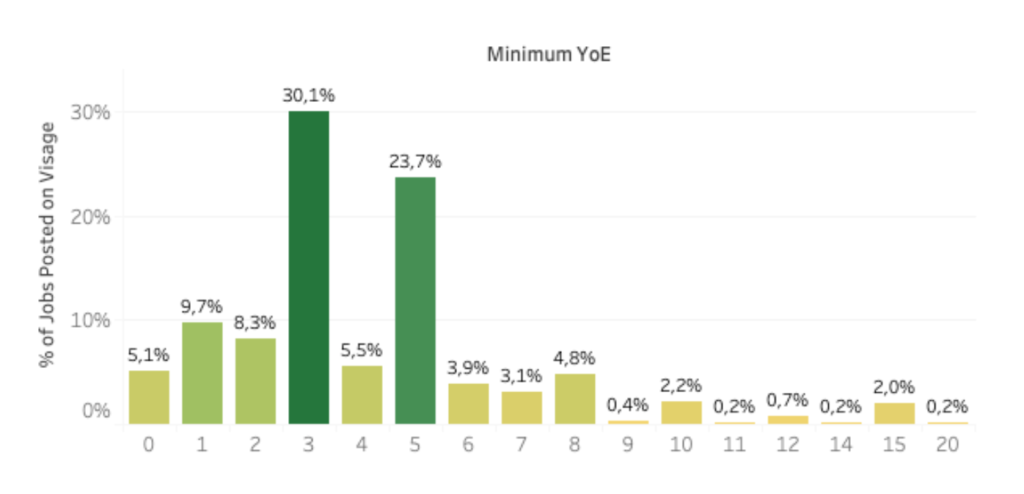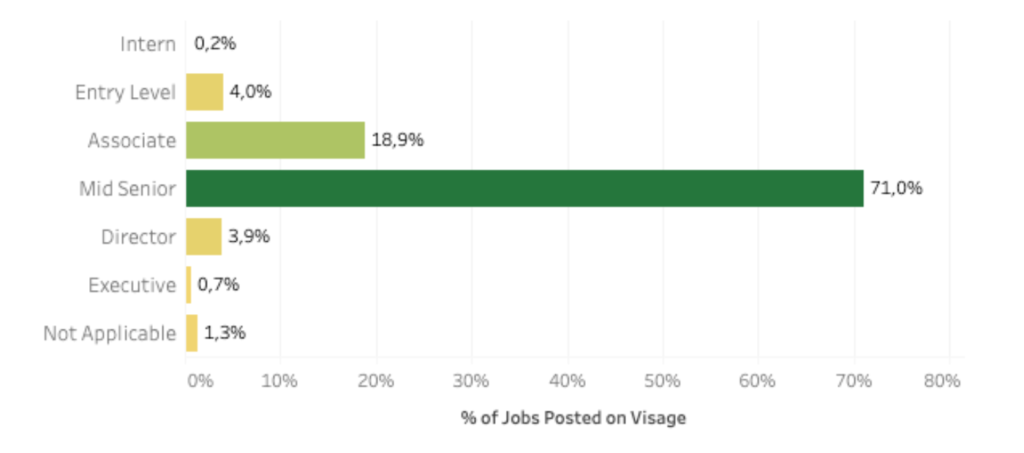Let’s talk about Sourcing! Sourcing is the unsung hero of the Talent Acquisition function, sourcers are the folks who scrape LinkedIn, conduct x-ray searches and dig deep into the weeds to find unique and talented individuals (purple squirrels). They prowl around LinkedIn groups and Facebook groups to try to find talented, unique candidates, people who are oftentimes, not actively searching for a new position. But their time is not limitless and the more time they spend building boolean searches, the less that an actual human is talking to an actual candidate. If you look at the Talent Acquisition process, the focus tends to be on recruiters and hiring managers and as a result, the effort in building new and more efficient technology has been on that part of the process. While technology has come on in leaps and bounds for those professionals, by and large sourcers have been left with LinkedIn and some chrome extensions. Technology such as Visage exists to help sourcers be more productive and enable recruiters to self-source but the way to evaluate these tools has traditionally not been very successful.
The world has changed more in the last five months than in the last five years, or at least, that’s what it feels like. In terms of the world of business, my initial thought was that recruitment would be smashed by the pandemic but conversations early into the shutdown showed that my assumptions were false. It turned out that in general, those who were looking to make a move were spurred on by the pandemic and those who were hiring, were eager to get new blood in the door quickly before the dreaded recession.
Overall recruitment volume is down, as a by-product of much of the country being furloughed for many months and businesses across the country being hard hit by the pause. That being said, there is usually a silver-lining in these things and that silver lining has landed in the world of e-commerce and software, most notably with Amazon being utilized to an extreme degree by the quarantined public and Zoom, which has sky-rocketed over the last few months.
With the world slowly but surely easing it’s way out of lockdown and perhaps into another lockdown, we are seeing an increase in the number of monthly job openings in the US, 6.5 million in August up from a low of 5 million in April 2020. There is light at the end of the tunnel and while that might not mean we’ll be returning to the office any time soon, it does mean that companies will start to suffer regrettable turnover and need to replace those employees. There is an added challenge of companies having furloughed and then permanently let go of staff, which means they are working with a skeleton crew. Human resources – talent acquisition and learning and development in particular, tend to be first on the cutting list when companies go through times of struggle. Take LinkedIn for example, easily the biggest player in the world of talent sourcing. Even LinkedIn has cut nearly 1,000 jobs in July because they see a reduction in hiring and are questioning their own ability to service the industry. Sourcing through LinkedIn has become evermore challenging and time-consuming. As we come out of this, scaling back up is going to be more challenging than ever.
Without bashing LinkedIn too hard, because it is a great platform and was a pioneer in the professional networking space, the content has arguably become tired and disingenuous and many Talent leaders are asking themselves whether there is a more effective way to spend their budget. When I am asked what other options does a TA leader have in terms of efficient spend allocation, I always return with a question (an old trick I learnt from my brother, a management consultant by trade), what type of candidate are they trying to hire and where are they trying to hire them – LinkedIn works well for white-collar professionals in english speaking countries, Xing in DACH and naukri in India.
Looking at what type of candidate is more challenging – do they need someone who has a phd in mechanical engineering, or someone with an interest and desire to learn? Is this a leadership role or a sole contributor role? Are they looking for 5 years experience or 5 months? And what parts of these answers are hard or soft – do they really need 5 years experience or is that being used as a company standard because that has always been the case. Now the idea here is not to focus on any one specific role but to think about diversification of spend. Horizontal and vertical integration might work for the conglomerates, and actually there is a lot of evidence to suggest it doesn’t, but diversification and specialization of sourcing efforts is more than likely the right way to go for you. If your organization hires 20% at the corporate level and those can be sourced through LinkedIn, then great but what about the other 80%? Some organizations need to get pretty scrappy about their sourcing activities, including posting on physical job boards for certain types of jobs. For other roles, utilizing a crowd sourcing tool such as Visage could be the way forward.
Looking at Visage as a proxy for crowdsourcing tools and using their data we can see that the experience of candidates that are submitted range from relatively inexperienced (0-5 years work experience) to very experienced candidates with 15+ years work experience. For Visage, the majority (approximately 70%) of roles are at the Mid-Senior level and the average minimum years of experience is 4.1, showing that Visage can cover a range of requirements. For very bespoke and possibly mission critical roles such as c-suite positions, it might make sense to engage a dedicated executive search firm such as Heidrick & Struggles or Spencer Stuart but for the vast majority of roles, opening up the candidate pool through a crowd-sourcing mechanism like this makes sense and saves time and effort. Time being a key performance indicator that some TA leaders may have decided against factoring into consideration in the past.
Critically analysing spend on sourcing tools is important and critically reviewing the time spent by sourcers or recruiters in that solution before it bore fruit is as real an expenditure as the cost of the solution. The beauty of crowd-sourced sourcing is that once the job has been posted, the independent sourcers do the rest of the work, they work their networks to find the right candidates and the resource that you are paying for, namely the sourcer or the recruiter, can turn their attention to other matters. The independent sourcers get a cut of the fee once they have successfully submitted a candidate, but until then, they are busy working on your role without much more input from your recruiter. That time needs to be taken into consideration when looking at return on investment from sourcing technologies.

 As my father is fond of saying, there’s more than one way to skin a cat. And while that saying is pretty badly outdated, the sentiment applies here. There are a range of tools and solutions on the market today that have been built to service all kinds of nooks and crannies.
As my father is fond of saying, there’s more than one way to skin a cat. And while that saying is pretty badly outdated, the sentiment applies here. There are a range of tools and solutions on the market today that have been built to service all kinds of nooks and crannies.
Forward-thinking Talent leaders will add value to their organization by testing out new and innovative ways to source talent, ideally better-suited talent at lower per candidate cost! I’m confident that tools like Visage can be utilized to solve some of these more pointed sourcing challenges.

